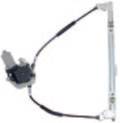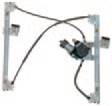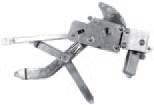Window Regulator Technology
Window Regulator TechnologyThe evolution of window regulator technology has led to increased vehicle occupant comfort and convenience as new systems become available. It also offers a growing opportunity for the independent Aftermarket. Manual window regulators, while still in use, are declining steadily. At the other end of the technology spectrum, the most advanced electronic units feature one-touch comfort function and anti-pinch* operations. Types of Technology Powered window regulators are supplied in four distinct technologies, each employing a slightly different method to achieve a similar result: Cable System
Bowden System - this is the most commonly used technology
Double Bowden System
Scissior System
Comfort Function A simple test for this function is whether or not the window regulator is activated by one touch of the switch. A window regulator without this function will require the user to maintain pressure on the switch to raise or lower the window. Comfort function-specified units utilise a variety of connector types and these should be checked to ensure a correct replacement. While they might look similar, they can use 4, 6 or 8 pins, and work in three quite distinct ways: Connector Type 1 - A unique central unit controls all of the comfort functions within the vehicle, by sending impulses to the motors on each of the window regulators. Connector Type 2 - A more complex technology, each of the window regulator motors in the vehicle has an internal electronic chip. A unique connector allows these functions to communicate with a central unit. Connector Type 3 - This is similar to Connector Type 2 but utilises an electronic protocol code which protects the system. Exclusivity on these protocols rests with the VM. It is also worth remembering that a vehicle could employ three different types of window regulator – for example, it might conceivably have a driver’s door with one-touch comfort function, a passenger door with standard function, and rear doors with manual window regulators. Replacement Reasons for failure are various and include: • Accident damage • Part wear or malfunction • High ambient temperature causes rubber seal expansion and strain on the motor • Non-use/corrosion of rear doors The most commonly replaced part within the system is the mechanism. This has built-in adaptability and can be used with a variety of different motors including those fitted with a onetouch comfort function. From a sales point of view the rate of replacement has increased by 1.5% year on year, with the split approximately 50% driver’s door, 20% front passenger door, and 15% for each of the rear doors. Interestingly manual window regulators now account for only 6% of all sales. | Related Articles |




Comments
Post a Comment